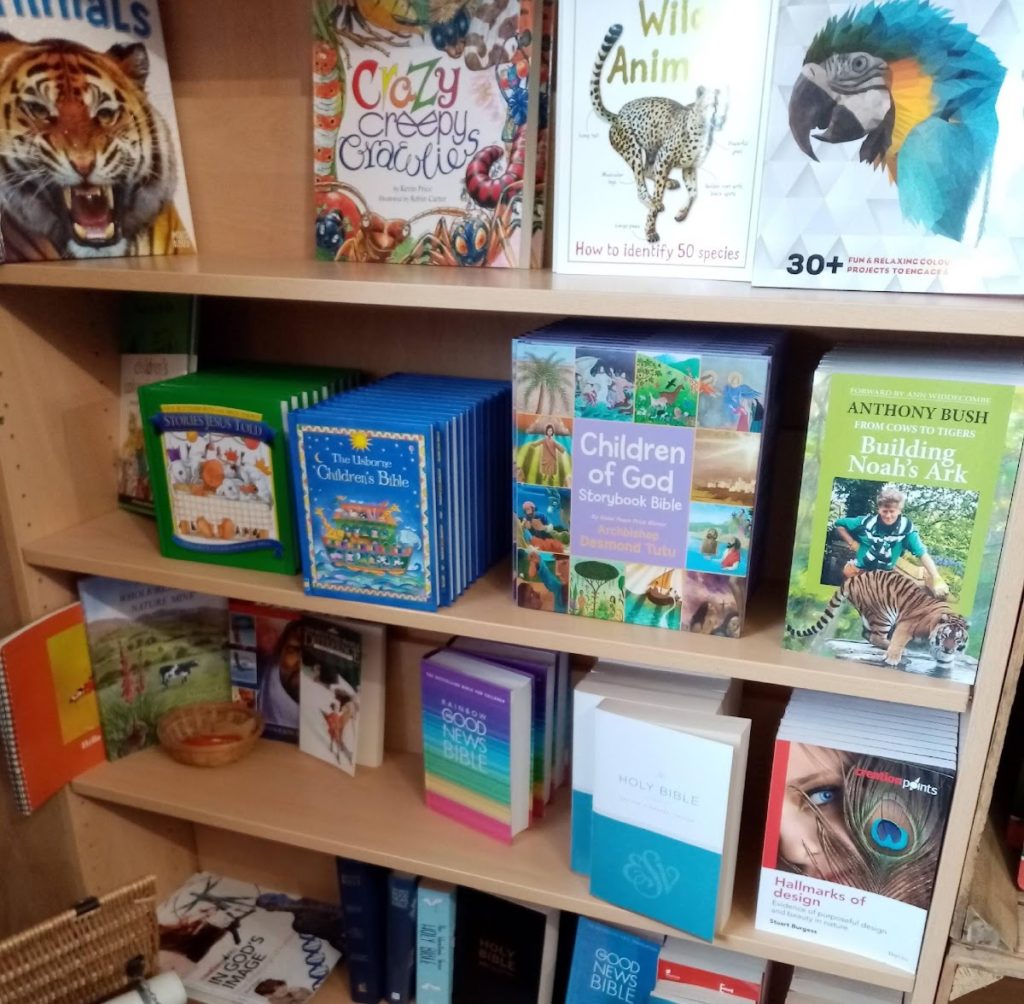Nestled in the North Somerset countryside, a mere 15 minutes from the M4, sits a peculiar tourist attraction that has, for its size, received a remarkable amount of attention. It has featured in publications as varied as Vice, Scientific American and Jezebel. It has been the subject to protests and campaigns attempting to shut it down. It has been visited by skeptics and humanists including Alice Roberts, Bruce Hood and Michael Shermer. It is, if you haven’t guessed already, Noah’s Ark Zoo Farm.
The reason for such widespread interest is that Noah’s Ark is the UK’s only creationist tourist attraction. For those lucky enough to be unaware, creationism is the belief that God created the universe and life on earth. There are many different versions which can be broadly categorised into two main types: Young Earth Creationism and Old Earth Creationism.
Young Earth Creationism is the most well-known, positing that the Earth is a mere 6,000-10,000 years old, and that God created the Earth and its inhabitants as they exist today, following the literal Creation as told in Genesis.
Old Earth Creationism believes that God created the Earth and its inhabitants longer ago than the 6,000-10,000 years of Young Earth Creationism, but usually still significantly less than the 4.5 billion years that scientists have estimated. Old Earth Creationism attempts to reconcile the Biblical recounting of the origins of life on Earth with the scientific evidence, accepting some degree of “microevolution” but rejecting “macroevolution”. In reality there is no difference between these two types of evolution except time – microevolution is visible on small timescales while macroevolution is visible on longer timescales. More precisely, microevolution refers to adaptation within a species while macroevolution refers to speciation and the origin of higher taxonomic levels.
Many old- and young-earth creationists accept the Biblical account of the flood, and many who do so work hard to reconcile it with geological and palaeontological evidence in a pseudoscientific field termed flood geology.
Creationism at Noah’s Ark Zoo Farm
Noah’s Ark Zoo Farm promotes an Old Earth Creationist viewpoint, proposing that the Earth is around 100-150,000 years old. The attraction was permanently opened in 1999 by former dairy farmer Anthony Bush and his wife Christine, and according to his memoir, Building Noah’s Ark: From Cows to Tigers, it was opened with this explicit aim. The zoo has grown in the intervening two decades and is now home to zoo animals such as lions, elephants, rhinos and giraffes, as well as more typical farm animals including cows, pigs and chickens.
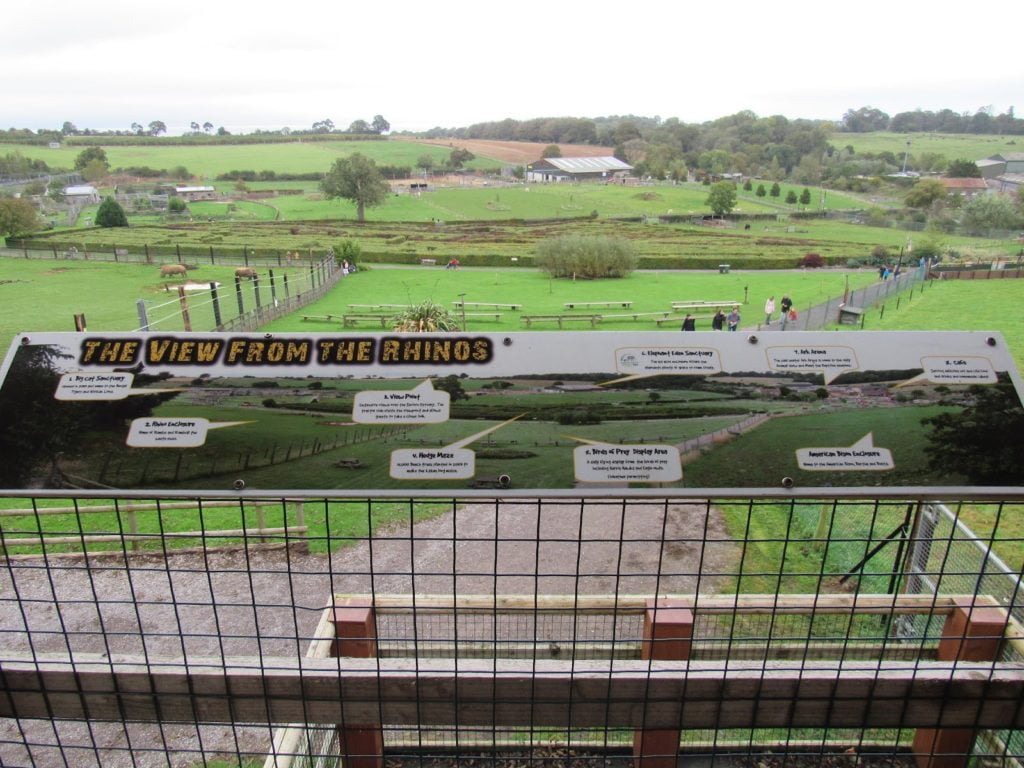
It has two key locations around which the animal enclosures are situated. The first is a hedge maze – the longest in the UK – which was established in 2004, in the shape of Noah’s Ark, complete with diplodocus, glyptodon, elephants and giraffes among its animal cargo. The second is the Ark Arena. This is a converted farm building, in which are located an indoor play area and some of the notorious creationist posters.
The rest of the zoo farm is a mix of farm park, adventure playground, and mediocre zoo. The sole exception to this is the Ark Exhibit – a barn that contains the intended centrepiece of the attraction: a “realistic, scale model of the Ark”. This barn also contains creationist posters describing the owners’ preferred version of flood geology.
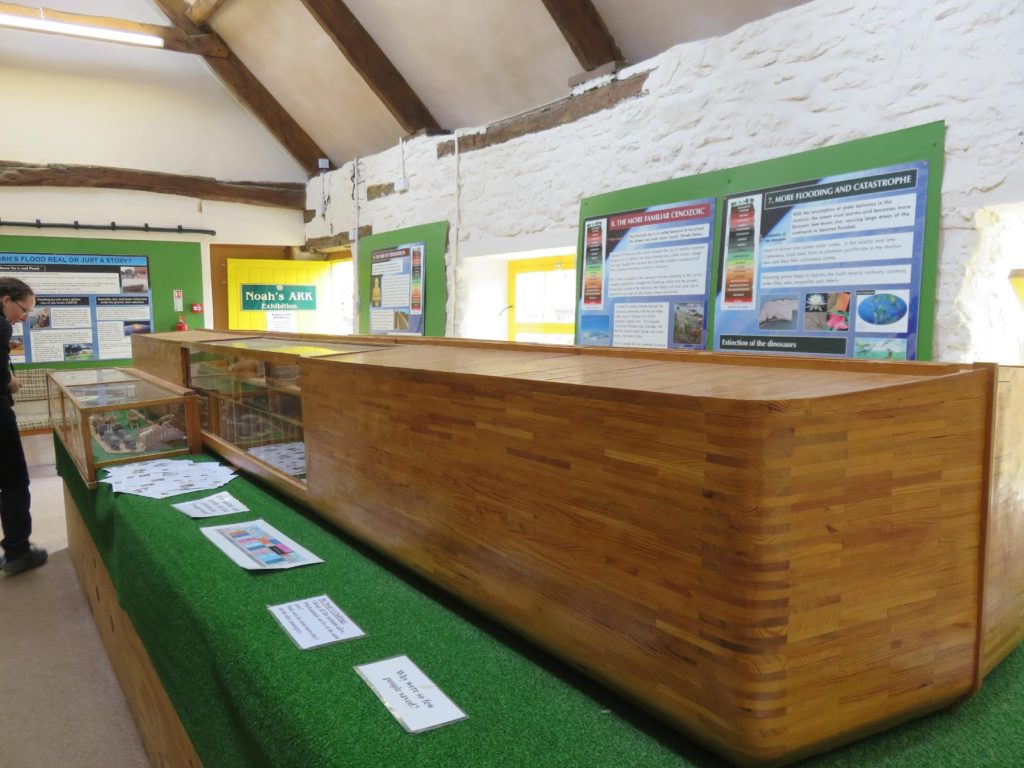
The information on these posters is far more technical than any child could be expected to willingly engage with, but this is intentional. In an interview with New Humanist regarding those in the Ark Arena, Anthony Bush explained,
It is there because parents are supervising their children and are bored, so are ready to look at something. It has to be moderately worded, or, like @Bristol [an attraction promoting science and technology, now called We the Curious] the other way round, it will put people off. If you think I am expecting 6 year olds to understand Radioisotope dating, you are very strange! The displays invite discussion. Some of them need a good background in geology to fully appreciate.
While the Ark Arena and Ark Exhibit have attracted criticism, very few skeptical visitors have publicised the creationist material present in other parts of the zoo. The notable exception to this is Hayley Stevens who visited the zoo on a wet and windy February in 2014, commenting that,
Throughout the park there is an unsettling theme of religious scripture and teachings
I visited the zoo for the first time in 2017 and saw the same material. For example, along the outer walls of the hedge maze were badly-faded posters titled Nature Looks Intended.
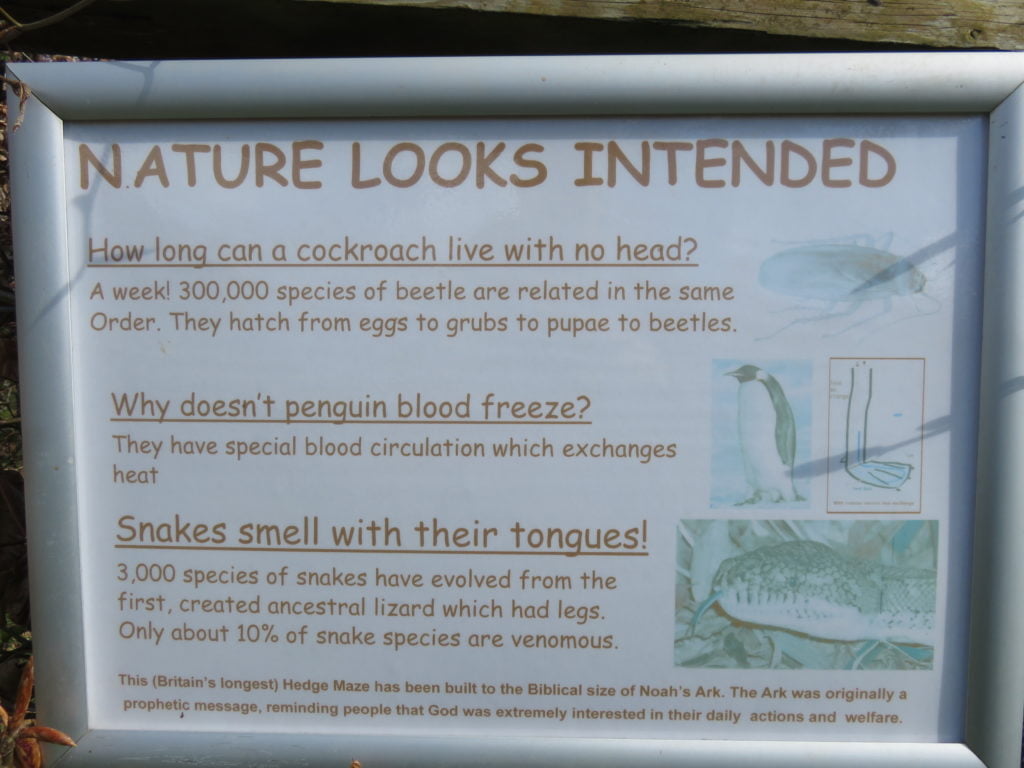
The information boards on the enclosures presented standard information about the animals, which could easily lull the casual observer into thinking that the creationist material was restricted to the obvious areas. However, the posters in and around the Bird Walkthrough provided a clear creationist perspective. While the majority of the information was sound, they all ended with an affirmation of the belief that all this was as God had intended. For example, a board about bird nests finishes with,
All nests appear to be built by a God-given instinct, passed on in each species’ DNA.
Another on bird song ends:
Design: These features go far beyond what is biologically an advantage, and to a musically-minded Creator, who designed singing on their DNA, with built-in evolution.
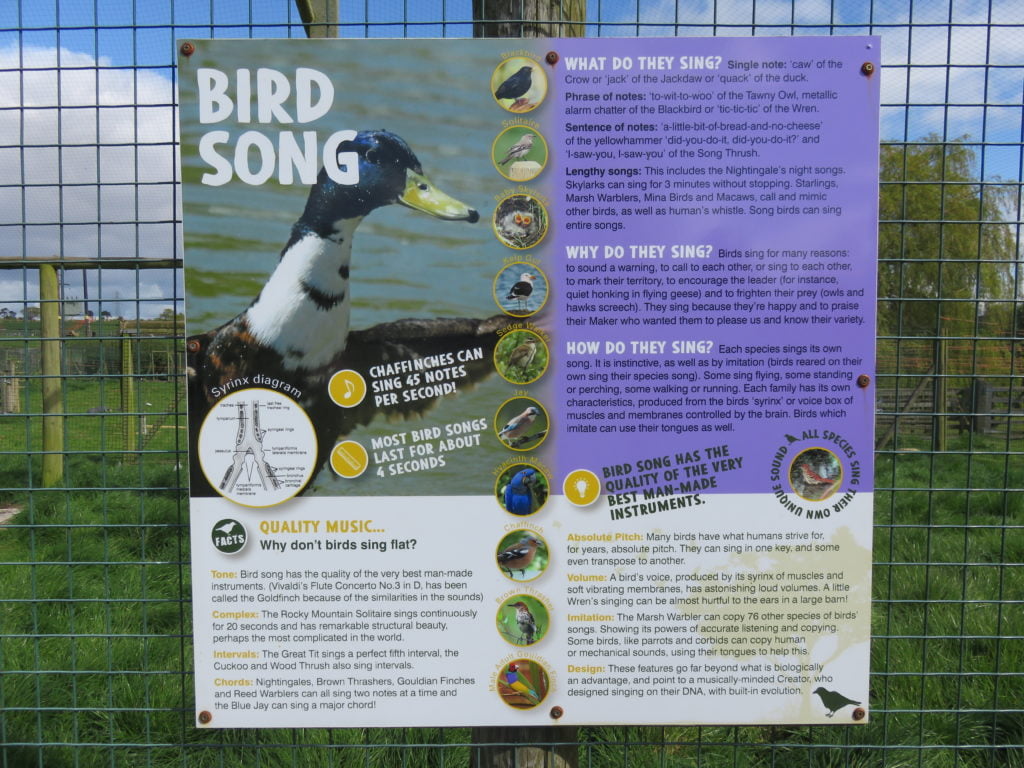
Does it Matter?
The question that immediately comes to mind when presented with this subtle (and not so subtle) creationist propaganda is: does it matter? How many people actually read the signs at zoos and farm parks? It turns out that most people read at least some. A paper by Katie Roe and colleagues found on average 95% of zoo visitors read at least some signs and 58% read over half. Another study by Benjamin Ouellette found that 74% of visitors briefly scan signs while only 25% thoroughly read them. These studies suggests that most people will likely miss the creationist perspectives being offered, a perspective backed up by reading forum threads on this very issue. In this mumsnet thread from 2016, multiple people say that they haven’t noticed the creationist material on their visits, a view supported by commenters on this Zoochat thread.
If you don’t read the material, what’s the big deal? The zoo is a fun day out for kids with ample free parking and easy access (something that unfortunately cannot be said for the far superior Bristol Zoo, which is leaving its city-site next year for its more spacious and accessible Wild Place Project site). But as Alice Roberts put it in her Guardian article following her visit,
you might think you’re going there for a fun afternoon out, but you’re really acquiescing in someone’s attempt at a bit of light indoctrination.
You may not see the propaganda, but you are supporting an organisation promoting it, and maybe the next family to pass through their doors will see it and will be misinformed as a result.
What bothers me most about this is the duplicity involved. It is a duplicity that Anthony Bush has admitted but not acknowledged. In an interview with the Church Times he said,
From the outside, our farm is not overtly Christian. But, from the inside, we are very strongly Christian. I am a Creationist, and we see the farm as a mission station to give people scientific permission to believe in God…
Sometimes parents rush out screaming, with their children in tow, if they object to what we are saying. But, as a reporter for The Guardian said, it is hardly a surprise.
If the farm is not overly Christian from the outside, then why shouldn’t people be surprised and concerned to find it is overtly Christian once they have handed over their money? Zoos and farm parks come with an expectation that they will provide a fun day out but also come with the possibility of some educational benefit. They do not come with an expectation of religious proselytising, yet that is what you get when you go to Noah’s Ark Zoo Farm.
Educational Provision and Awards
This lack of openness about the creationism being espoused is even more concerning when you realise it is incredibly popular with schools. In 2014 parents petitioned the Welsh Assembly to review the suitability of the attraction as a destination for school trips, but was told that it fell within the remit of Local Authorities and Consortia, not the Assembly, to make such decisions. A Freedom of Information request by BBC Wales found that between 2013 and 2016, over 4,000 students from Welsh schools had visited the attraction, and noted that the figure could be even higher as not all councils held figures. Publicly-accessible figures from English schools do not appear to be available.
This popularity is somewhat surprising. A primary school teacher of almost 20 years experience reviewed the educational materials on their website for me and compared them with other zoos, both large (such as Chester and Bristol) and smaller (such as Hamerton and Twycross). They told me that the workshops offered by Noah’s Ark are cheaper than elsewhere, but are far less beneficial to children. The teacher explained:
their resources have no relevance to anything that actually happens in school and has no link to the curriculum. It’s all very basic, very generic, nothing I’d find any use at all…
I can only assume all this stuff was thought up by someone who is not actually a teacher. So far I’d not touch any of this with a barge pole – not because it’s inaccurate but because the ideas are just completely awful.
The zoo farm has won awards for its educational provision, but when you look more closely these awards often say very little about the quality of that education. For example, it won a BIAZA (British and Irish Association of Zoos and Aquariums) Education Bronze Award in 2018 for its involvement in the Explorers Escape project. Except, from what I can tell, it’s not called Explorers Escape, it’s Explorers Educate, and as part of a three-week project Noah’s Ark provided a week of outreach to local schools during which time classes,
learnt some fun animal facts, made some amazing crafts and thought about some important conservation topics.
While this sounds like it might have been fun, it doesn’t sound exactly award-worthy. But it is characteristic of their teaching materials. A look through their Teaching Ideas shows a prevalence of arts and crafts ideas and little in the way of stimulating scientific curiosity.
In 2019 it won a BIAZA Education Silver Award for its Ark for All accessibility project. While accessibility is, of course, vital to providing a good educational experience, the upgrades highlighted by the zoo mostly focus on its play area. Again, it is absolutely right that play areas should be accessible. However, I think it is disingenuous to reward these upgrades with an “Education” award. These awards provide teachers and parents with the belief that their children will be receiving exceptional standards of education while attending their workshops, yet their publicly-available materials suggest that such exceptional standards are simply not being met.
Have Things Changed?
The zoo has managed to keep a low profile within the skeptical community since Alice Roberts and Hayley Stevens visited in in the winter of 2013-14. The question therefore remains, has the campaigning had any effect? The zoo had been resolute in its position, providing a statement including the lines,
Noah’s Ark Zoo Farm is a privately owned park run by Christian proprietors which provides some displays and information boards at the zoo discussing creation, evolution, recolonisation theory and the biblical story of Noah and the Ark. These are in areas of the zoo where interested visitors may choose to read them if they wish to and are designed to encourage people to consider whether there is evidence for a Creator in a natural world clearly shaped by evolution.
I returned to the zoo in October of this year to see what, if anything, had changed. I am surprised and pleased to report that positive changes have indeed been made.
The indoor play area which Alice Roberts noted was the “holy of holies” of the creationist material has been completely redecorated. Gone are the posters, replaced with bare but colourful walls. The separate building containing the model of the ark and posters detailing Anthony Bush’s version of flood geology was completely closed. This closure is, unfortunately, a temporary measure due to the pandemic, and there are plans to revamp and re-open the exhibition with new displays.

Even the website has been updated. Some time in early 2017 it had a redesign, moving prominent links to its creationist material to much harder to find locations. The amount of creationist material accessible through the website has also significantly reduced. Where previously the site linked to a separate site, earthhistory.org.uk, which was sponsored by the zoo and promoted its creationist viewpoint, the link has since been removed.
This isn’t to say the zoo has abandoned its religious viewpoint – far from it. Over the summer the zoo featured on Songs of Praise, and it still has creationist material in the gift shop. But it was relegated to a far corner of the shop, and this feels emblematic of the approach the zoo is taking in recent years: not completely removing the creationist and religious aspects entirely, but putting them to one side.
What has led to this change? I wish I could give a definitive answer. My speculation would be that it is a combination of factors, of which pressure from skeptical, atheist and humanist groups is but one small but hopefully significant part.
Whatever has spurred the changes, I think we can at least say that the only creationist attraction in the UK is no longer quite the ignominious place it once was.




